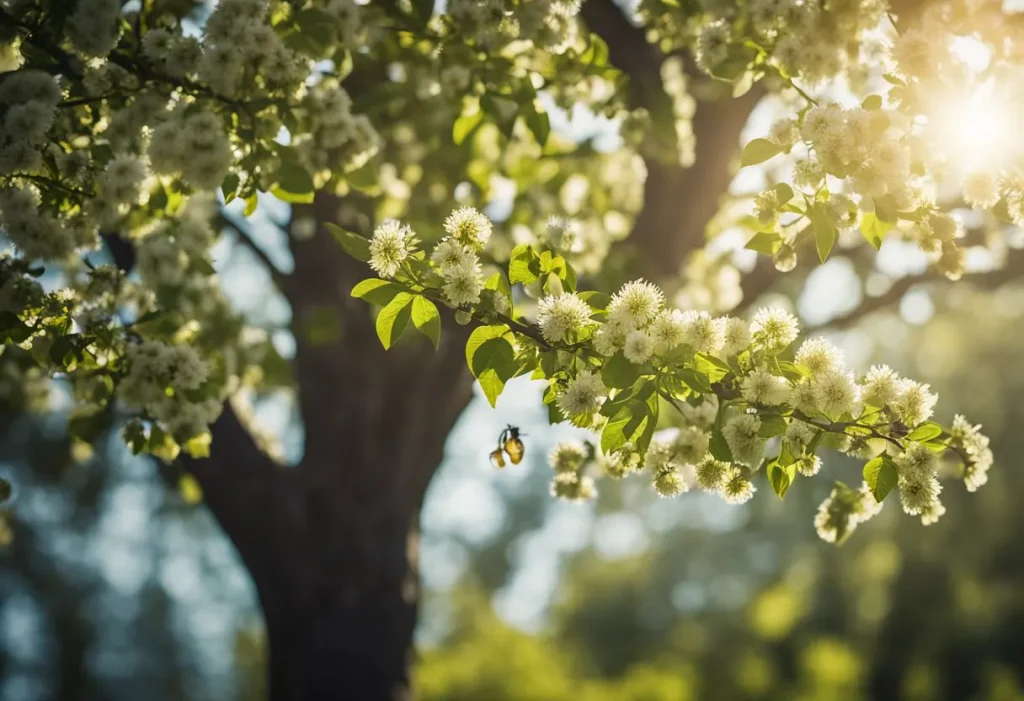Spring Equinox: Everything You Need to Know
The Spring Equinox, also known as the Vernal Equinox, marks the astronomical beginning of spring in the Northern Hemisphere. It is an astronomical event that occurs twice a year, in March and September, when the sun is directly above the equator, resulting in equal amounts of daylight and darkness across the globe. This year, the Spring Equinox will occur on March 20th, 2024, at 9:15 AM GMT source.

Understanding Equinoxes is key to understanding the significance of the Spring Equinox. Equinoxes occur when the Earth’s axis is not tilted towards or away from the sun, resulting in equal amounts of daylight and darkness. This event has been observed and celebrated by cultures around the world for thousands of years, with many traditions and rituals associated with the arrival of spring.
Cultural and Spiritual Significance of the Spring Equinox varies across the globe. In many cultures, it represents a time of renewal, rebirth, and fertility. It is a time to celebrate the return of longer days and warmer weather and to honour the natural cycles of the Earth. From the ancient Mayans to modern-day pagans, it has played an important role in the spiritual and cultural traditions of people around the world.
Key Takeaways
- The Spring Equinox marks the astronomical beginning of spring in the Northern Hemisphere and occurs twice a year, in March and September.
- Equinoxes occur when the Earth’s axis is not tilted towards or away from the sun, resulting in equal amounts of daylight and darkness.
- Cultures around the world have celebrated the Spring Equinox for thousands of years and represents a time of renewal, rebirth, and fertility.
Understanding Equinoxes

Equinoxes are a phenomenon that occurs twice a year, in March and September. They are the two points in Earth’s orbit where the plane of the equator intersects the plane of the ecliptic. During an equinox, the tilt of the Earth’s axis is neither towards nor away from the sun, resulting in almost equal amounts of daylight and darkness.
Distinction Between Solstice and Equinox
It is important to note that equinoxes are different from solstices. Solstices occur twice a year as well, in June and December. During a solstice, the tilt of the Earth’s axis is at its maximum angle towards or away from the sun, resulting in the longest or shortest day of the year.
Spring Equinox in the Northern Hemisphere
The spring equinox in the Northern Hemisphere occurs around March 20th or 21st. It marks the beginning of astronomical spring and is also known as the vernal equinox. During this time, the sun is directly above the equator, resulting in almost equal amounts of daylight and darkness.
Autumn Equinox and Its Relation to Spring Equinox
The autumn equinox, also known as the fall equinox, occurs around September 22nd or 23rd. It marks the beginning of astronomical autumn and is the counterpart to the spring equinox. During this time, the sun is once again directly above the equator, resulting in almost equal amounts of daylight and darkness.
Overall, equinoxes are fascinating astronomical events that mark the beginning of a new season. They are different from solstices and occur twice a year. The spring equinox in the Northern Hemisphere marks the beginning of astronomical spring, while the autumn equinox marks the beginning of astronomical autumn.
Cultural and Spiritual Significance
The Spring Equinox, also known as the Vernal Equinox, marks the beginning of spring in the Northern Hemisphere. It is a time of renewal, rebirth, and transformation. The cultural and spiritual significance of this event is celebrated by many cultures and religions around the world.
Spring Equinox Spiritual Meaning
The spiritual meaning of the Spring Equinox varies depending on the culture or religion. For many, it symbolizes the balance between light and dark, day and night, and the beginning of a new cycle of growth and renewal. It is a time to reflect on the past and set intentions for the future.
In Pagan and Wiccan traditions, it is known as Ostara. It is a time to celebrate the return of the goddess of spring and the renewal of life. It is believed that this is the time when the goddess and the god unite to bring fertility and growth to the earth.
Traditional Spring Equinox Rituals
Many cultures and religions have traditional rituals that are performed during the Spring Equinox. These rituals are meant to honour the changing of the seasons and to celebrate the renewal of life.
One common ritual is the egg hunt, which is a symbol of new life and fertility. The egg is also a symbol of the goddess of spring and is often used in rituals to honour her.
Another traditional ritual is the planting of seeds. This is a symbol of new beginnings and growth. It is believed that planting seeds during this event will bring abundance and prosperity in the coming year.
Global Perspectives

Spring Equinox in the Southern Hemisphere
While the Spring Equinox marks the beginning of spring in the Northern Hemisphere, it marks the beginning of autumn in the Southern Hemisphere. In countries such as Australia, New Zealand, and South Africa, it is celebrated as the Autumnal Equinox. During this time, the days become shorter, and the temperatures begin to drop.
Variations in Spring Equinox Celebrations
The Spring Equinox is celebrated in various ways around the world, with many cultures having their unique traditions and customs. For example, in Japan, it is celebrated as a national holiday called Shunbun no Hi, which translates to “Spring Equinox Day.” On this day, people visit their ancestral graves to pay their respects and clean them.
In Iran, it is celebrated as Nowruz, which means “new day.” It is a 13-day celebration that marks the beginning of the Persian New Year. People clean their homes, buy new clothes, and prepare traditional foods during this time.
In Mexico, the Spring Equinox coincides with the ancient Mayan festival of Chichen Itza. During this festival, the sun casts a shadow on the pyramid that appears to be a giant serpent descending the steps. This event is known as the “serpent of light” and is considered a symbol of the rebirth of nature.
Overall, this is a time of renewal and rebirth, celebrated in various ways around the world. Whether it is the beginning of spring or autumn, the equinox marks a significant turning point in the year and is celebrated with joy and hope for the future.
Related: Lunar Calendar 2024: Important Dates and Events to Look Out For
Conclusion
Overall, the Spring Equinox is a significant astronomical event that marks the beginning of spring in the Northern Hemisphere. During this time, the amount of daylight and darkness is equal, and the Northern Hemisphere is slowly tilting towards the sun. The Spring Equinox is also associated with several holidays, including Easter and Persian New Year.
Throughout history, this event has been celebrated by various cultures and religions, and it continues to be an important time for many people today. The Equinox is a reminder of the cyclical nature of life and the importance of balance in all things.







